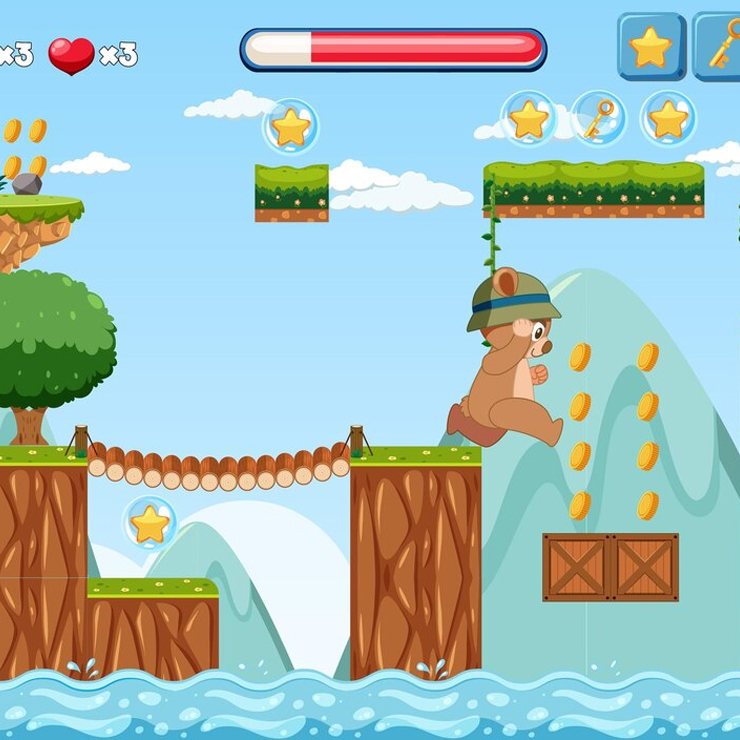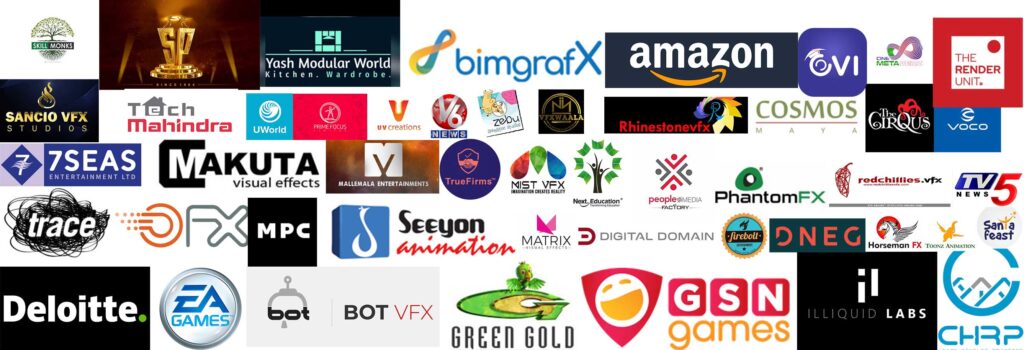
Institution for Diploma in Game Design Course in Hyderabad
Game Design is a dynamic and rapidly growing field that offers exciting opportunities for creative individuals. AIIMS Multimedia Academy offers the most comprehensive Game Design Course in Hyderabad, designed to equip students with the skills and knowledge needed to succeed in this competitive industry. In this course, you will delve into the world of Game Design, learning how to create captivating visual effects using the latest technologies. From Game Design, you will explore a variety of Game Design forms and techniques, gaining hands-on experience through practical projects. Our course goes beyond just teaching the technical aspects of Game Design. We provide a comprehensive overview of the historical and technical evolution of Game Design, giving you a deep understanding of the field’s foundations and trends. As India emerges as a global hub for Game Design, this course opens up a world of opportunities. Companies like Disney are increasingly outsourcing their Game Design work to India, creating a high demand for skilled professionals in this field. A career in Game Design is not only creatively fulfilling but also highly remunerative, making it a lucrative choice for those with a passion for visual storytelling. Join our Fashion Design Course at AIIMS Multimedia Academy and embark on a rewarding journey into the world of Game Design. Discover your creative potential, hone your skills, and prepare yourself for a successful career in this exciting industry.

ADMISSION FORM
Essential Duties and Responsibilities of a Game Design Course
- Concept Development: Developing the overall concept and theme of the game.
- Gameplay Design: Designing the mechanics, rules, and objectives of the game to create an engaging player experience.
- Story Development: Creating the narrative and storyline of the game, including character development and world-building.
- Level Design: Designing the layout, challenges, and progression of levels in the game.
- Game Balancing: Balancing the difficulty, rewards, and pacing of the game to ensure a satisfying player experience.
- Prototyping: Creating prototypes and playtesting them to refine gameplay and identify areas for improvement.
- Collaboration: Working closely with artists, programmers, and other team members to implement game designs.
- User Interface (UI) Design: Designing the interface elements, such as menus, buttons, and HUDs, to be intuitive and user-friendly.
- Sound and Music Integration: Working with sound designers and composers to integrate audio elements into the game.
- Quality Assurance: Testing the game to identify and fix bugs, glitches, and other issues.
- Market Research: Conducting market research to understand player preferences and trends in the gaming industry.
- Community Engagement: Engaging with the gaming community to gather feedback and incorporate player suggestions into the game.
- Project Management: Managing the game development process, including scheduling, budgeting, and resource allocation.
- Continual Learning: Staying updated with the latest trends and technologies in game design to enhance skills and expertise.
- Documentation: Creating design documents and specifications to guide the development team throughout the project.
Diploma in Game Design (Eligibility: 10th or 12th and above)
- Semester 1:
- Semester 2:
Foundation in Game Design
Introduction to Game Design
History and evolution of game design
Principles of game design
Game Development Process
Overview of game development phases
Understanding game design documents
Game Mechanics and Gameplay
Basics of game mechanics
Designing engaging gameplay experiences
Storyboarding and Concept Art
Creating storyboards for game narratives
Concept art for characters and environments
2D Game Design
Basics of 2D game design
Designing levels and gameplay elements
Game Prototyping
Rapid prototyping techniques for games
Playtesting and feedback gathering
Introduction to Game Engines
Understanding game engines and their role in game development
Introduction to basic functionalities of game engines
Game Industry Overview
Overview of the game industry
Career paths in game design and development
Advanced Game Design Techniques
Advanced Game Mechanics
Advanced game mechanics and systems
Balancing gameplay elements
3D Game Design
Basics of 3D game design
Designing 3D levels and environments
Character Design and Animation
Creating compelling characters for games
Basics of character animation
Sound Design for Games
Basics of sound design for games
Implementing sound in games
Level Design
Advanced level design techniques
Creating immersive game worlds
Game Development Project
Collaborative game development project
Designing, developing, and testing a complete game
Game Marketing and Publishing
Basics of game marketing and promotion
Publishing games on digital platforms
Portfolio Development
Building a professional game design portfolio
Presentation and showcasing of game design projects
Career Path
- Game Designer
- Level Designer
- Narrative Designer
- Systems Designer
- Game Producer
- Game Developer
- Game Programmer
- Gameplay Programmer
- User Interface (UI) Designer
- User Experience (UX) Designer
- Game Artist
- Concept Artist
- 3D Modeler
- Animator
- Character Designer
- Environment Artist
- Texture Artist
- VFX Artist
- Sound Designer
- Composer
- Audio Engineer
- Game Tester
- Quality Assurance (QA) Tester
- Community Manager
- Marketing Manager (Gaming Industry)
- Game Writer
- Game Localization Specialist
- Monetization Specialist
- Game Educator (Game Design Instructor)
- Indie Game Developer
Our Recruiters




